
15-12-2025 21:11
 Hardware Tony
Hardware Tony
Small clavate hairs, negative croziers and IKI bb

15-12-2025 15:54
 Johan Boonefaes
Johan Boonefaes
Unknown anamorph found on the ground in coastal sa

15-12-2025 15:48
 Danny Newman
Danny Newman
Melanospora cf. lagenaria on old, rotting, fallen

15-12-2025 07:05
 Danny Newman
Danny Newman
Pseudosclerococcum golindoi (det: Zotto)near Cosb

15-12-2025 11:49
 Danny Newman
Danny Newman
ITS sequences from the following two collections B

15-12-2025 07:09
 Danny Newman
Danny Newman
indet. Rutstroemiaceae sp. on unk. fallen leavesMc

15-12-2025 12:34
 Danny Newman
Danny Newman
indet. Rhytismataceae on oak leafnear Purchase Roa

09-12-2025 12:06
 Andgelo Mombert
Andgelo Mombert
Bonjour,Je recherche l'article concernant Hypobryo
Thelebolaceae en Phillyrea
Javier Ormad,
30-12-2011 16:09
Hi all:
I present another specimen
Apothecia on damaged plant debris of Phillyrea angustifolia, not to rule out urinary or fecal remains. Up to 2 mm in diameter. Cylindric-claviformes asci, curved, attenuated at the base, 8 spores, IKI negative, up to 180 x 18 microns. Elliptical ascospores, with 2 inmature gutules, hyaline, with warts and protruding a large tuber of 11-15 (18) x 7-9(13) microns. Parafisis septate, curved in the upper zone, surpassing the asci, of 3 microns of thickness. Excipule texture with angular and globose cells. Hairs pointed, hyaline, double wall, septated, up to 350 x 7.5 microns.
It impresses of being before a Thelebolaceae, without further.
Any ideas?
Javier Ormad
Peter Welt,
31-12-2011 14:13

Re : Thelebolaceae en Phillyrea
Interesting find Javier, but what kind of genre I can not say. Even fungi on dung, with the combination: apothecium with hair (septate) and rough spores, there is not. Only Mycoarctium has ornamented spores, but with a rediculate.
Happy New Year 2012 Peter
Javier Ormad,
01-01-2012 19:33
Re : Thelebolaceae en Phillyrea
Information is essential in the determination of the species. That was the reason because I've present. Mycoarctium was also watched, but it doesn't present lattice, was not accepted. We will continue seeking...?
It's pity, because stopped the rainfall in this area, since 1 month ago.
Happy New Year.
Best wishes!
Javier
It's pity, because stopped the rainfall in this area, since 1 month ago.
Happy New Year.
Best wishes!
Javier
Raúl Tena Lahoz,
31-03-2012 11:25

Re : Thelebolaceae en Phillyrea
Hi Javier & Peter
This one fits quite good to Luciotrichus lasioboloides R. Galán & Raitv.
Cheers,
Raúl
This one fits quite good to Luciotrichus lasioboloides R. Galán & Raitv.
Cheers,
Raúl
René Dougoud,
01-04-2012 15:22
Re : Thelebolaceae en Phillyrea
Cher Raoul
As-tu la publication de ce genre et espèce ? Je suis intéressé. Merci
Amitiés et souvenirs
René
Galán R. & Raitviir A. 1994. Luciotrichus lasioboloides, a new genus and a new species of the Pezizales. - Czech Mycology 47: 271-275.?
As-tu la publication de ce genre et espèce ? Je suis intéressé. Merci
Amitiés et souvenirs
René
Galán R. & Raitviir A. 1994. Luciotrichus lasioboloides, a new genus and a new species of the Pezizales. - Czech Mycology 47: 271-275.?
Nicolas VAN VOOREN,
01-04-2012 16:46

Re : Thelebolaceae en Phillyrea
René, la publication est accessible dans la bibliothèque d'Ascomycete.org. Je la communique néanmoins ici.
René Dougoud,
01-04-2012 18:40
Re : Thelebolaceae en Phillyrea
Cher Nicolas,
Je suis vraiment confus de ne pas avoir été voir sur le site Ascomycete.org qui, notamment pour les articles de Czech Mycol. est plus riche que Cyberliber !
Merci Nicolas
René
Je suis vraiment confus de ne pas avoir été voir sur le site Ascomycete.org qui, notamment pour les articles de Czech Mycol. est plus riche que Cyberliber !
Merci Nicolas
René
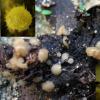
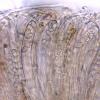
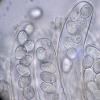
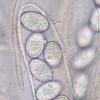
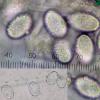
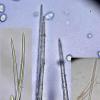
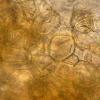
 CzechMycol
CzechMycol